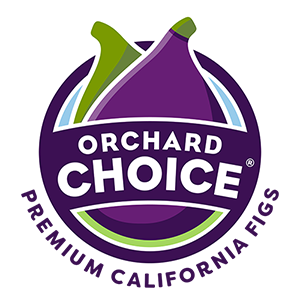At Valley Fig Growers, we’re always on the lookout for interesting information and new uses for figs. Recently a research article caught our attention that explored fig extract benefits, namely, how an extract of abscisic acid made from dried figs may provide health benefits (1). The study suggests that this extract may help to control blood sugar and insulin responses to foods. In other words, the extract may help treat disorders such as prediabetes, type 2 diabetes mellitus, and metabolic syndrome, and possibly obesity. Read on to see how it might affect blood sugar for a controlled sugar level.
Worldwide, the incidence of Type 2 diabetes mellitus has reached epidemic proportions (8), and it is associated with serious and costly complications such as heart and kidney diseases, as well as nerve and vision damage. In the United States, it is the eighth leading cause of death (2,3).
Over 11% of Americans have diabetes and 90-95% of them have type 2 diabetes (2,3). Beyond that, 38% of American adults have prediabetes, impaired glucose tolerance where their blood sugar levels are higher than normal but not high enough to be diagnosed with type 2 diabetes.
The good news is that prediabetes can be reversed with healthy lifestyle interventions. That’s one reason this study, using fig extract for controlled blood sugar levels and insulin responses to food, is exciting. Plus, there is great interest in well-tolerated, low-cost plant-based nutraceuticals to help protect health and manage disease.

What is abscisic acid and what is its role in plants and human health?
Abscisic acid occurs naturally in fruits and vegetables. Identified in the 1960s, it works as a phytohormone that helps plants survive under stress such as variations in temperature, light, or water (6).
Humans and other mammals use abscisic acid too. Studies show that, like insulin, abscisic acid stimulates glucose uptake into cells and suggest roles for abscisic acid in blood glucose management, controlling inflammation, maintaining the immune system, and more (6).
Where do we get abscisic acid? The body makes it, and we get in in our diets by consuming fruits and vegetables.
U.S. adult consumption of fruits and vegetables is low, making abscisic acid intake low. A 2019 survey showed that only about 12% of American adults met fruit recommendations and 10% of vegetable recommendations. How much should you aim for? The 2020-2025 U.S. Dietary Guidelines for Americans recommends 1 ½ to 2 cups of fruit and 2-3 cups of vegetables daily for good health and disease prevention (9).
If people ate more vegetables and fruits, they would have a higher intake of abscisic acid (not to mention other essential health-protecting nutrients) but since they don’t, the promise of a well-tolerated supplement of abscisic acid-rich fig extract to improve metabolic health in this study is intriguing.

Why Figs?
This study used ABALife™ fig fruit extract. The Spanish company Euromed SA® funded the study, conducted by the Sydney University Glycemic Index Research Service. Figs have one of the highest concentrations of abscisic acid found in nature (6,11). They’re a common food in the diet of the Mediterranean and grow naturally in Spain. Euromed SA® has an exclusive licensing agreement with BioTherapeutics Inc. for their patented technology to create the abscisic acid extract from figs for use to “treat and prevent insulin resistance and impaired glucose tolerance.” (12)
What Did This Study Test and What Were the Results?
The researchers wanted to learn if ABALife™ fig fruit extract can help manage blood sugar levels and insulin fluctuations when consumed with a glucose (sugar) drink.
Ten healthy adults consumed test drinks of a standardized glucose drink mixed with the abscisic acid-rich fig extract and, for comparison, control glucose drinks without the extract. They measured the effects of test and control drinks on blood glucose and insulin responses over a 2-hour period.
Note: The researchers used the glycemic index and insulinemic index in the study because they are common measures of the impact of foods, beverages, and supplements on blood sugar levels.
The study showed that adding the fig fruit extract to the glucose beverage significantly reduced glycemic and insulin responses compared to the glucose drink alone. This suggests that fig fruit extract in relatively small quantities of 100-1200 milligrams added to food or used as a food supplement may help reduce the glycemic index of high glycemic index foods or diets and could improve glucose tolerance without increasing insulin levels.
A key finding is that abscisic acid-rich fig extract benefits blood sugar management without causing the pancreas to keep making insulin. In other words, it may prevent the over-stimulation of the pancreas beta cells that occurs in insulin resistance that can eventually wear them out and cause them to stop making insulin.
This study with human subjects builds upon other abscisic acid studies. It has been shown that people with Type 2 diabetes and gestational diabetes may have impaired abscisic acid metabolism (8) and could potentially benefit from an abscisic acid supplement.
Controlled Sugar Level for Regulating Blood Sugar?
Next steps may be to validate these findings with a larger group of people, those with prediabetes and other metabolic disorders, and look at blood sugar and insulin effects beyond 2 hours to see about controlled sugar levels. We’ll keep an eye out for more research.
For now, this study is a reminder to appreciate the pleasure of eating California Dried Figs, and enjoy nutritional benefits bundled within whole figs—soluble and insoluble fiber, known to help with digestion and blood sugar management, energy in the form of quality carbohydrates and naturally occurring sugar, and essential minerals—magnesium, potassium, and calcium.
Learn More
For more on this subject, tap our related posts: about Diabetes and Metabolic Syndrome, Fiber in Figs, Type 2 Diabetes and Prediabetes, and Blood Sugar and Figs and Figs, Blood Sugar and the Glycemic Index/
Need ideas as you chew on this food for thought? Try Lorelle’s Whipped Cottage Cheese Dip with Figs + Feta, or for dessert, make her PB+J Mousse.
_________________________________
RECENT FINDINGS:
After the fig extract benefits study was published, another study (10) with obese and diabetic mice showed that dietary fig fruit extract was associated with decreased inflammation, increased insulin sensitivity, improved blood sugar control and reduction of systolic blood pressure. Plus, the fig extract worked with insulin to influence the metabolic activity of skeletal muscle – increasing the rate the body stores glucose as glycogen in muscles.
Muscle glycogen is key to blood controlled sugar levels management. Fifty to 90% of blood glucose is stored as glycogen, mostly in muscles. When the body needs more fuel, it converts the glycogen back into glucose to keep blood levels normal.
This is important because insulin resistance is linked to impaired muscle glucose metabolism. If glycogen isn’t stored properly, a cascade of issues impair insulin signaling and lead to inflammation and other problems associated with prediabetes, type 2 diabetes and more.
Studies with humans would need to be done to show this benefit in people.
_________________________________
References






One Comment on “Fig Extract Benefits + Blood Sugar: A Future for Figs & Controlled Sugar Levels?”
Pingback: A Novel Way to Help Control Blood Sugar